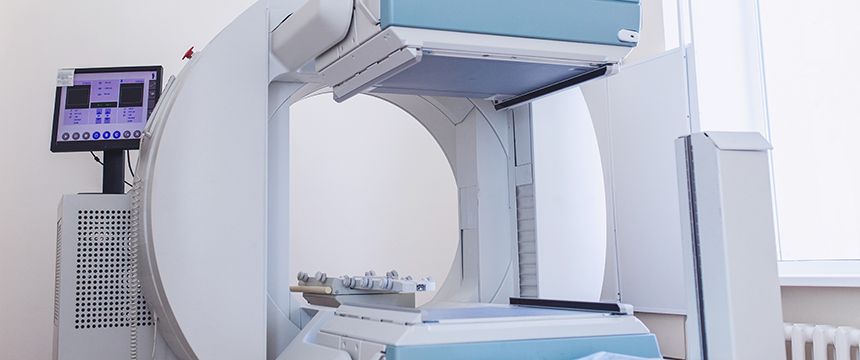Radiation Oncology: What You Need to Know About the Long Awaited Bundled Payment Proposal

On July 10, 2019, the Centers for Medicare & Medicaid Services (CMS) and the Center for Medicare & Medicaid Innovation (Innovation Center) released a much awaited proposal for a new bundled payment model for radiation oncology. The Proposed Rule (Medicare Program; Specialty Care Models To Improve Quality of Care and Reduce Expenditures), which was published in the Federal Register on July 18, follows months of discussion concerning radiation oncology alternative payment models from leaders at CMS and the Department of Health and Human Services (HHS) and speculation in the oncology community. The deadline for comments on the Notice of Proposed Rule Making is September 16, 2019, at 5 p.m. ET.
According to CMS, the Radiation Oncology (RO) Model aims to address three problems identified by Congress under the Patient Access and Medicare Protection Act related to the provision of radiation oncology: lack of site neutrality for payments, incentives that encourage volume of services over value of services, and coding and payment challenges.
In a departure from the recent “opt-in” alternative payment models, the proposed RO Model would require participation from radiotherapy (RT) providers and suppliers that furnish RT services within randomly selected geographic areas, and apply prospective, episodic payments to physician group practices, hospital outpatient departments, and freestanding radiation therapy centers for radiotherapy services. Under the CMS Quality Payment Program, the model qualifies as an Advanced Alternative Payment Model (Advanced APM) and a Merit-based Incentive Payment System APM (MIPS APM).
The RO Model is proposed to begin in 2020 (either January 1 or April 1), and end December 31, 2024.
The Proposed Radiation Oncology Model’s Key Features
The RO Model replaces the current fee-for-service payment system with prospective, episodic payments to incentivize higher-value radiotherapy care. Per CMS and the Innovation Center, the new model is defined by the following key elements:
- Prospective, episodic (bundled) payments based on a patient’s cancer diagnosis, covering a 90-day episode for the 17 cancer types meeting the model’s included cancer type criteria;
- Required participation for all providers in selected Core Based Statistical Areas (CBSAs);
- Site-neutral payment, established through a common, adjusted, national base payment that applies regardless of the location at which services are furnished;
- Split payments, into two components (professional and technical) in order to transition seamlessly into current claims systems; and
- Linkage of payment to quality through reporting and performance on quality measures, clinical data reporting, and patient experience.
Participation in the Proposed Radiation Oncology Model
The required model participants will be radiotherapy providers and suppliers within randomly-selected CBSAs. The split-payment structure reflects these different participants: the professional component payment covers any included services that may only be furnished by a physician, and the technical component covers any included services not furnished by a physician (such as provision of equipment, supplies, personnel, and other costs).
Eligible RO Model participants include physician group practices, hospital outpatient departments, and freestanding radiation therapy centers. Participants will fall into one of three categories: Professional participants, Technical participants, and Dual participants.
- A Professional participant is a physician practice group enrolled in Medicare, identified by a single Taxpayer Identification Number (TIN). Professional participants furnish only the professional component of radiotherapy services, either at a hospital outpatient department or at a freestanding radiation therapy center.
- A Technical participant is a hospital outpatient department or freestanding radiation therapy center, identified by a single CMS Certification Number (CCN) or TIN. Technical participants furnish only the technical component of radiotherapy services.
- A Dual participant may only furnish services through a freestanding radiation therapy center, identified by a single TIN. Dual participants furnish both the professional component and the technical component of radiotherapy services.
The proposed rule lists the following criteria for included cancer types: (1) the cancer type is commonly treated with radiation, and (2) the cancer type has associated current ICD-10 codes that have demonstrated pricing stability. At this time, CMS has identified seventeen (17) cancer types that fit these criteria: anal cancer, bladder cancer, bone metastases, brain metastases, breast cancer, cervical cancer, CNS tumors, colorectal cancer, head and neck cancer, kidney cancer, liver cancer, lung cancer, lymphoma, pancreatic cancer, prostate cancer, upper GI cancer, and uterine cancer.
Payment Under the Proposed Radiation Oncology Model
Under the RO Model, participant-specific payment amounts will be calculated considering the following factors: proposed national base rates, trend factors, and adjustments for the participant’s case-mix, historical experience, and geographic location. A discount factor will then be applied at four percent (4%) for the professional component and five percent (5%) for the technical component. Additional withholds may then be applied: two percent (2%) for both the professional and technical components with respect to incomplete episodes, two percent (2%) for the professional component with respect to quality, and one percent (1%) for the technical component starting in 2022 with respect to beneficiary experience. Portions of the withholds can be earned back based on clinical data reporting, quality measure reporting and performance, and the Consumer Assessment of Healthcare Providers and Systems (CAHPS®) Cancer Care Radiation Therapy Survey.
Quality Programs
The RO Model will be an Advanced APM and a MIPS APM. RO Model participants that meet the Qualifying APM Participant (QP) threshold will qualify for the Advanced APM; otherwise, participants will be in a MIPS APM. Accordingly, participants are required to meet all pertinent requirements for their respective APMs. In addition, annual certification of intent to use Certified Electronic Health Record Technology will be required by all RO Model participants.
Role of Beneficiaries
Professional RO Model participants will be required to provide a RO Model Beneficiary Notification Letter to the Medicare beneficiaries that they treat. Beneficiaries will remain responsible for the cost-sharing requirements for which they were responsible under the traditional fee-for-service programs. However, beneficiary cost-sharing may be lower relative to traditional fee-for-service cost-sharing due to the discounts applied to the RO Model components.
Conclusion
The Radiation Oncology Model expands CMS’s shift from traditional fee-for-service payment models into more quality-focused payment programs. The RO Model will introduce participants (physician practice groups, hospital outpatient departments, and freestanding radiation therapy centers in certain CBSAs) to prospective, episodic payments covering 90-day periods. Payments are split into professional and technical components, with different adjustments associated with each. The Model qualifies as an Advanced APM as well as a MIPS APM, and it provides the opportunity to increase payments based on clinical data reporting and quality measures and performance. This is the first mandatory payment model we have seen under the current administration, and we expect to see additional mandatory models behind it.
As comments are likely to be coming in from multiple sources, we anticipate further refinement of this draft guidance by CMS. Comments are likely to focus on implementation challenges, such as defining the proposed beneficiary population and cost-sharing implications. Technical legal issues will also need to be addressed to facilitate data sharing and permit revenue sharing under applicable fraud and abuse laws.
The deadline for comments on the Notice of Proposed Rule Making is September 16, 2019, at 5 p.m. ET. We are currently developing comments in response to the proposed rule, including the mandatory nature of the model.
Learn More at the ACCC Annual Meeting & Cancer Center Business Summit
The proposed model, and strategies for participation, minimizing the potential impact, and best practices in implementation, will be addressed at the Association for Community Cancer Centers (ACCC) 46th Annual Meeting & Cancer Center Business Summit (CCBS) to be held from March 4-6, 2020, at the Washington Hilton Hotel. Visit our website to learn more.
Stephanie Schwartz, Summer Associate, also contributed to the creation of this article.

